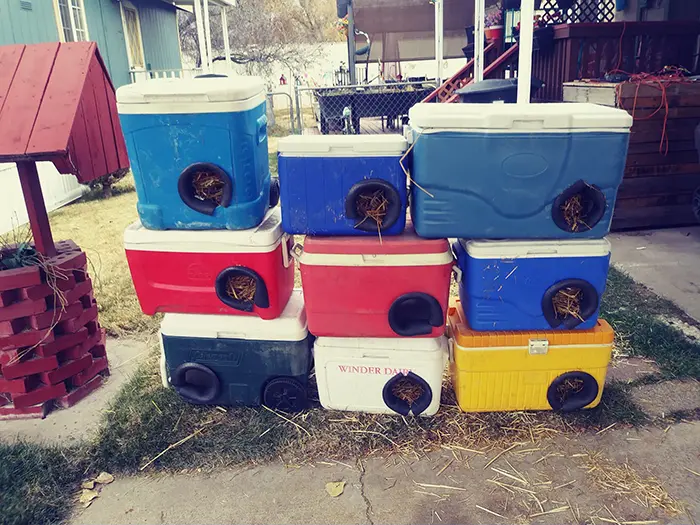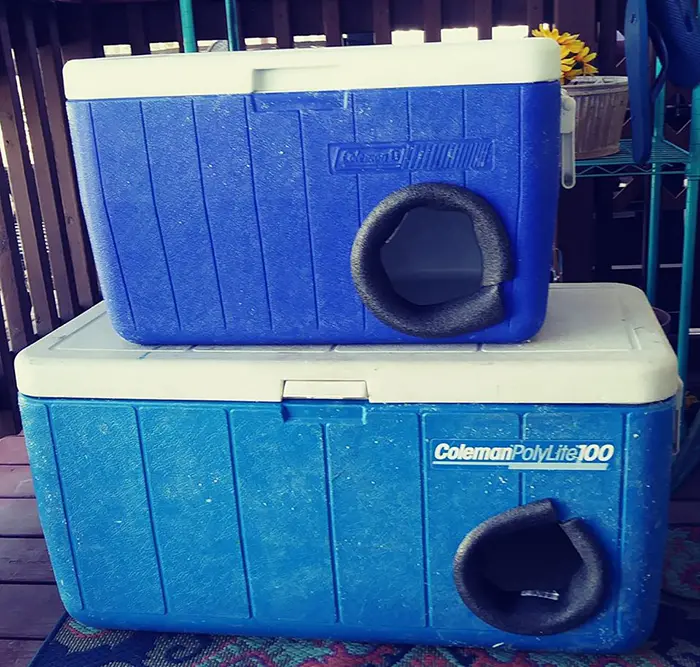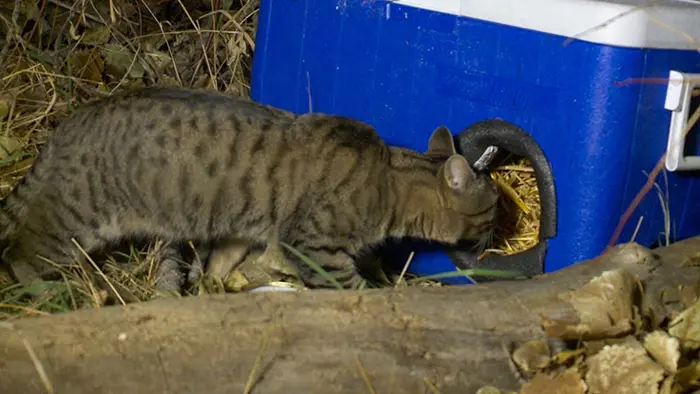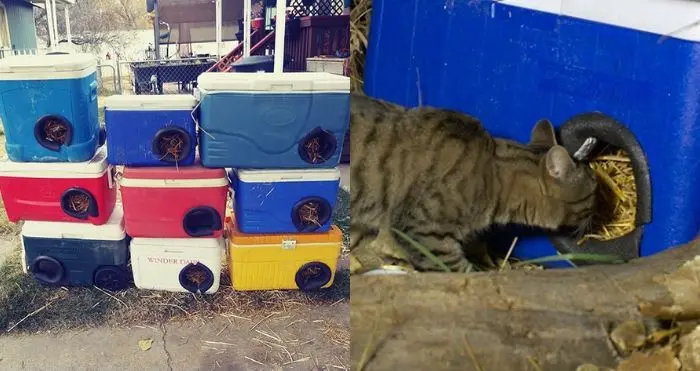Winter can be particularly harsh, especially for stray animals. Luckily, there are people who remind us to look after our furry friends out in the wild. One of them is Philip Rogich. This Utah-based modern-day animal hero provides winter refuge to stray and feral cats by turning discarded coolers into cat shelters.
“I saw a Facebook post about a man making them and thought I would give it a try. I made my own post looking for old coolers and it kind of took off. My wife and I are also animal lovers and I wanted to do something for them.”
Normally, we use coolers to keep things cold. But Rogich explained that coolers can, in fact, be used to keep things warm as well. Old coolers just usually end up in the landfills because they’re not biodegradable. So, Rogich thought it would be a good idea to give them another use. He even created a step-by-step guide and a video tutorial on how to create one of these cat coolers. You can find these on his Facebook page, Batman of Ogden.
To date, Rogich has already made 77 shelters and still counting

Basically, you can get everything you’ll need either from your garage or local hardware store. If you don’t have an old cooler on hand, Rogich suggests buying a used one from a thrift store. You can also try your luck at finding an old one from your neighbor’s trash and get it for free. Otherwise, just buy a new one at an affordable price from your local hardware store.
To create this makeshift shelter for feral felines, take your old cooler and drill an entrance hole on it. The hole should be at least six inches in diameter. For best results, Rogich recommends using a six-inch drill bit. Keep in mind that the hole should be at least two inches from the bottom and the side of the cooler. This will help keep water and snow out of the container.

Next, line the entrance with a foam rubber pipe insulation. This will help pad the jagged surface of the hole and help with insulation. Lastly, add bedding inside, and your winter refuge is ready for accommodation. For the bedding, you may use straw or Mylar film. But definitely don’t use newspaper, hay, sawdust or cloth, as these can get wet and tend to hold moisture.

Also, bear in mind that cats are not the only stray animals out in the wild. Other animals may also compete with them for this cozy space. As such, Rogich also advises adding a second hole that will serve as an escape door. You can read more about the detailed procedure here.
Watch this video to learn how to make these winter cat shelters
Rogich’s efforts have received various responses from people online







Source: Philip Rogich/Batman of Ogden Facebook | YouTube

